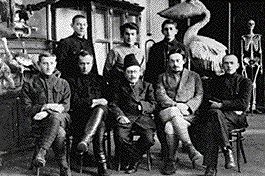Random events in population genetics - What are the consequences of genetic drift?

Genetic drift and gene fixation
The frequency of a gene is as likely to decrease as to increase by genetic drift; on average the frequencies of neutral alleles remain unchanged from one generation to the next. In practice, their frequencies drift up and down, and it is therefore possible for a gene to enjoy a run of luck and be carried up to a much higher frequency - in the extreme case, its frequency could after many generations be carried up to 1 (become fixed) by random drift.
Each generation, the frequency of a neutral allele has a chance of increasing, a chance of decreasing, and a chance of staying constant. If it increases in one generation, it again has the same chances of increasing, decreasing, or staying constant in the next generation; it thus has a small chance of increasing for two generations in a row (equal to the square of the chance of increasing in any one generation), a still smaller chance of increasing through three generations, and so on.
For any one allele, fixation by random drift is very improbable.
The probability is finite, however, and if enough neutral alleles, at enough loci, and over enough generations, are randomly drifting in frequency, one of them will eventually be fixed. The same process can occur whatever the initial frequency of the allele. It is less likely that a rare allele will be carried up to fixation by random drift than a common allele, because it would take a longer run of good luck; but it is still possible. Indeed a unique neutral mutation always has some chance, however small, of eventual fixation.
Image: much of the pioneering work on genetic drift was done by Theodosius Dobzhansky in his experiments on fruitflies in the 1950s. In this picture (taken at Kiev in 1924) he is seated second from left at the front.
| Next |



